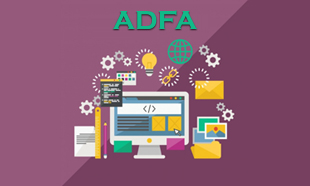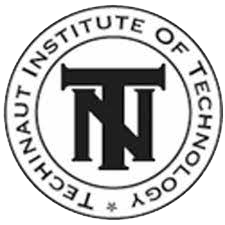0
Advance Diploma in Financial Application" at GD Computer Class, a Techinaut Institute of Technology franchise in Una, Gir Somnath, Gujarat, provides specialized training in financial software, accounting principles, and taxation management for aspiring finance professionals.
ADVANCE DIPLOMA IN FINANCIAL APPLICATION
GD Computer Class, a reputable institution situated in Una, Gir Somnath, Gujarat, offers a one-year comprehensive Advanced Diploma in Financial Application (ADFA). This program, a franchise of the esteemed Techinaut Institute of Technology, aims to equip students with advanced computer skills tailored to financial applications. Through theoretical learning and practical exercises, students gain proficiency in financial software, accounting principles, and business management tools. The program's comprehensive curriculum, backed by the reputation of Techinaut Institute of Technology, ensures that graduates of ADFA are well-prepared for diverse career opportunities in finance, accounting, and related fields, fostering a sense of security and trust.
COURSE OVERVIEW:
The ADCA program starts with a foundational module on the Basics of computers. This segment provides a thorough understanding of computer hardware, software, and the principles governing their interaction. Students delve into the core components, learning about CPUs, memory, storage, and peripheral devices. The emphasis is on building a strong foundation, ensuring participants are well-versed in the fundamental workings of a computer system.
1. Basic of Computer:
The course commences with an introduction to computing basics, providing students with a foundational understanding of computer hardware, software, and operating systems. Students learn about computer system components, input and output devices, and the fundamentals of computer operations. This module lays the groundwork for understanding the role of computers in financial applications.
2. Computer Appreciation:
Students gain an appreciation for the role of computers in financial management and accounting. They explore the various applications of computers in economic analysis, reporting, and decision-making processes. Emphasis is placed on integrating technology into financial workflows to enhance efficiency and accuracy. These skills are directly applicable to roles such as financial analysts, accountants, and financial managers.
3. Computer Organization:
This module delves into computer architecture and organization, focusing on aspects relevant to financial applications. Students learn about hardware components such as central processing units (CPUs), memory, storage devices, and input/output systems. Understanding computer organization is essential for optimizing system performance and troubleshooting issues.
4. Operating System:
Students are introduced to different operating systems, focusing on platforms commonly used in financial environments. They learn about operating systems' functions, file management, user interface navigation, and system customization. Practical exercises familiarize students with operating system features relevant to financial applications.
5. MS Word Processing:
Students learn to use Microsoft Word to create, format, and edit financial documents such as reports, memos, and correspondence. They explore features such as templates, styles, headers, footers, and mail merge. Advanced topics include document collaboration and version control.
6. MS Spreadsheet Package:
This module focuses on Microsoft Excel, a robust financial analysis, modeling, and reporting tool. Students learn to create and manipulate spreadsheets, perform calculations, and generate charts and graphs for data visualization. They also explore advanced functions, pivot tables, scenario analysis, and goal-seeking.
7. MS Presentation Package:
Students learn to create professional presentations using Microsoft PowerPoint. They explore design principles, slide layouts, animations, and multimedia elements for presenting financial information effectively. Emphasis is placed on clear and concise communication of economic concepts and data.
8. Introduction to Internet:
Students are introduced to the basics of the Internet and its relevance to financial applications. They learn about Internet protocols, web browsers, search engines, and online resources for financial research and analysis. Practical exercises involve accessing financial information online and using Internet tools for financial management.
9. E-Mail:
Students learn to use e-mail for professional communication in financial settings. They explore e-mail etiquette, compose and send messages, manage e-mail folders, and utilize e-mail features such as attachments and signatures. Practical exercises involve communicating with clients, colleagues, and stakeholders via e-mail.
10. Introduction to Tally:
This module introduces students to Tally ERP 9, a widely used accounting software. They learn about the features and functionalities of Tally, including ledger creation, voucher entry, and financial reporting. Practical exercises familiarize students with navigating the Tally interface and performing basic accounting tasks.
11. Administration in Tally:
Students learn to manage administrative tasks in Tally, including user accounts, security settings, and company configurations. They explore options for customizing Tally to meet specific business requirements and preferences. Practical exercises involve setting up user permissions, defining access controls, and configuring company settings in Tally.
12. Managing Groups Ledgers and Vouchers:
This module focuses on managing groups, ledgers, and vouchers in Tally. Students learn to create and maintain ledger accounts, organize them into groups, and generate financial reports based on ledger transactions. They also learn to enter various types of vouchers, including sales, purchases, payments, and receipts.
13. Cost Centres and Cost Categories:
Students explore the concepts of cost centers and cost categories in Tally. They learn to allocate expenses and revenues to specific cost centers for tracking and analysis. Practical exercises involve setting up cost centers, defining cost categories, and analyzing cost center-wise performance reports.
14. Introduction to Budgets:
Students learn about budgeting concepts and techniques in Tally. They explore the process of creating and managing budgets for different financial periods, monitoring budget variances, and analyzing budget performance. Practical exercises involve setting up budget scenarios, comparing actual vs. budgeted figures, and making adjustments as necessary.
15. Introduction to Voucher:
Students gain an understanding of voucher types and their significance in accounting processes. They learn to create and manage various types of vouchers in Tally, including payment vouchers, receipt vouchers, journal vouchers, and contra vouchers. Practical exercises involve recording voucher transactions and reconciling voucher entries.
16. Currencies (Multiple Currencies and Foreign Exchange):
Students learn to work with multiple currencies and manage foreign exchange transactions in Tally. They explore features for defining exchange rates, recording foreign currency transactions, and generating reports in different currencies. Practical exercises involve handling currency conversions and analyzing foreign exchange gains and losses.
17. Inventory Information:
This module focuses on managing Tally's inventory information. Students learn to create and maintain stock items, units of measure, and stock groups. They explore features for tracking inventory movements, managing stock levels, and generating inventory reports. Practical exercises involve recording stock transactions and performing inventory reconciliations.
18. Voucher Entry:
Students gain proficiency in voucher entry processes in Tally. They learn to record various types of transactions, including sales, purchases, payments, and receipts, using Tally's voucher entry interface. Practical exercises involve entering voucher details accurately and efficiently to maintain accurate financial records.
19. Displaying Information from Tally:
Students learn to extract and analyze financial information from Tally using reporting and analysis tools. They explore options for generating and customizing financial reports, such as balance sheets, profit and loss statements, cash flow statements, and trial balances. Practical exercises involve interpreting and analyzing financial reports to make informed business decisions.
20. Introduction to Taxation:
Students gain an overview of taxation concepts and practices relevant to financial accounting. They learn about different types of taxes, tax laws, and regulatory requirements governing taxation in India. Practical exercises involve calculating and recording tax liabilities, filing tax returns, and complying with tax regulations using Tally.
21. Introduction to Payroll:
This module introduces students to payroll management processes in Tally. They learn to set up payroll structures, define employee profiles, and process payroll transactions, including salary payments, deductions, and reimbursements. Practical exercises involve calculating net pay, generating payroll reports, and ensuring compliance with payroll regulations.
CONCLUSION:
The Advanced Diploma in Financial Application (ADFA) offered by GD Computer Class is a comprehensive program designed to equip students with advanced computer skills tailored explicitly for financial applications. Students gain proficiency in financial software, accounting principles, and business management tools through theoretical learning and practical exercises. Graduates of ADFA are well-prepared for diverse career opportunities in finance, accounting, and related fields, equipped with the knowledge and skills to excel in the dynamic and competitive financial landscape. Join us at GD Computer Class and embark on a rewarding journey toward a successful career in financial application.


